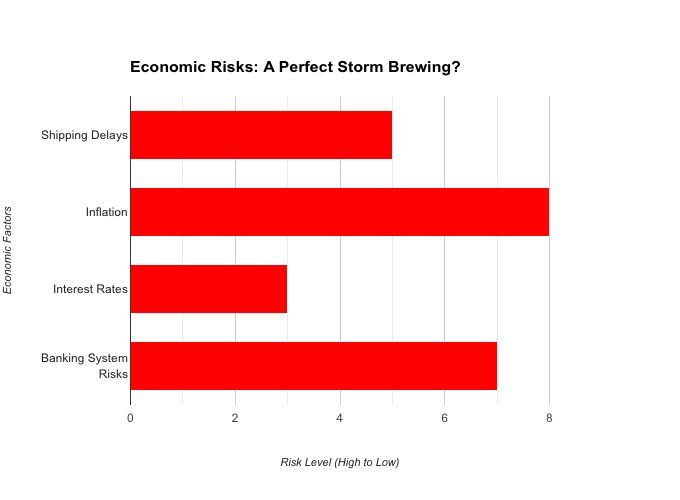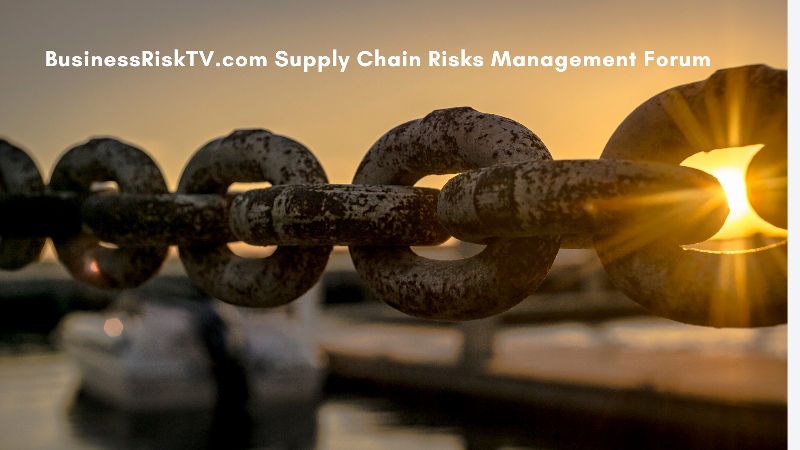Shipping Delays, Inflation, and Interest Rates: A Perfect Storm Brewing for Global Financial Collapse?
The global economy is standing on shaky ground. Inflationary pressures, fuelled by supply chain snarls and rising energy costs, have forced central banks to aggressively raise interest rates. While designed to cool inflation, this “higher for longer” interest rate environment threatens to derail economic growth and trigger a devastating financial crisis. At the heart of these concerns lie two critical chokepoints: the Suez Canal, a vital artery for global trade, and the Panama Canal, facing its worst drought in over a century.
This article investigates the potential economic fallout of restricted shipping times and skyrocketing shipping costs. It explores the connection between shipping delays, inflation, higher interest rates, and their potential impact on fragile banking systems globally.
Shipping Disruptions and Their Ripple Effects
The recent blockage of the Suez Canal by the Ever Given container ship in 2021 highlighted the fragility of global supply chains. Ongoing conflicts like the war in Gaza add to these challenges, further restricting shipping through the Red Sea. Similarly, the Panama Canal’s dwindling water levels pose a significant threat to global shipping. The cascading effects of these disruptions are far-reaching:
- Supply Chain Bottlenecks: Shipping is the lifeblood of international trade. When shipping routes are disrupted, deliveries get delayed, causing shortages of goods and driving up prices.
- Skyrocketing Shipping Costs: Delays and route changes have led to a dramatic increase in shipping costs. Businesses are forced to shoulder the burden, passing these costs onto consumers.
- Inflationary Pressures: Higher shipping costs and supply chain bottlenecks directly contribute to inflation as the prices of imported goods surge. Consumers pay more, reducing their purchasing power and hurting economic activity.
The Interplay of Inflation and Interest Rates
Central banks worldwide are engaged in a delicate balancing act, trying to rein in inflation without suffocating economic growth. The primary tool at their disposal is interest rates. Here’s how it works:
- Higher Interest Rates Combat Inflation: When inflation runs hot, central banks raise interest rates, making borrowing more expensive. This aims to slow down spending and investment, cooling overall economic activity and easing inflationary pressures.
- The Trade-off: However, higher interest rates come with a cost. Increased borrowing costs make it more expensive for businesses to invest, stifling job creation and economic growth. It also increases the burden of debt repayment for consumers as credit card rates and mortgage payments escalate.
The Risk for Banks and Shadow Banks
Rising interest rates present heightened risks for the financial sector, especially for banks and shadow banking institutions:
- Weaker Banking Systems: Banks rely on a healthy economy to generate profits. If rising interest rates lead to a sharp economic downturn, borrowers may default on their loans, resulting in losses for banks.
- Shadow Banking’s Vulnerability: Shadow banks, a network of non-bank financial institutions, are more susceptible to market volatility than traditional banks. These institutions often rely on short-term funding, making them vulnerable during periods of high-interest rates and investor stress.
A Recipe for Systemic Global Financial Collapse?
The combination of shipping delays, inflation, high-interest rates, and vulnerabilities within the banking system creates a potential recipe for a global financial crisis. Here’s what could happen:
- Cascade of Bank Failures: If businesses and consumers struggle to repay their debts due to high-interest rates, banks could see a wave of defaults. This could lead to cascading bank failures, echoing the 2008 financial crisis.
- Shadow Banking Collapse: A surge in defaults could trigger a panic in the shadow banking sector, resulting in a sudden withdrawal of funding. This could destabilise the entire financial system and exacerbate economic turmoil.
- Loss of Investor Confidence: A series of bank and shadow bank failures could shatter investor confidence, leading to a broader market sell-off and a further deepening of the economic crisis.
- Global Contagion: Due to the interconnected nature of the global financial system, a crisis originating in one country or region could quickly spread to others, impacting banks and industries worldwide.
Mitigating the Risks: A Path Forward
While the picture presented is undoubtedly grim, it’s important to emphasise that it is a potential scenario, not an inevitability. Here are some steps that can be taken to mitigate the risks and avert a financial collapse:
- Collaboration amongst Central Banks: Global central banks need to work in tandem to manage interest rate adjustments in a coordinated way, aiming to control inflation without triggering a recession.
- Investing in Infrastructure: Governments should invest in upgrading and diversifying critical infrastructure like the Panama Canal, reducing reliance on single chokepoints.
- Promoting Supply Chain Resilience: Strengthening supply chains by diversifying manufacturing and logistics, and investing in digital innovation, could help mitigate future disruptions.
- Strengthening Bank Regulations: Policymakers should strengthen regulations and oversight of the banking sector, particularly focusing on shadow banking institutions, to ensure better risk management and build a more resilient financial system.
Conclusion
The current economic landscape presents significant challenges. While the spectre of a financial crisis looms, it is not a foregone conclusion. By taking proactive steps, fostering international cooperation, and investing in resilience, we can navigate these turbulent times and build a more stable and sustainable future.
However, it’s crucial to acknowledge that this is a complex and evolving situation. The information presented here is for educational purposes only and should not be taken as financial advice. It’s essential to consult with qualified financial professionals to make informed decisions regarding your personal financial situation.
Get Help To Protect and Grow Your Business
Subscribe for Free Business Risk Alerts and Risk Reviews
Read more business risk management articles



